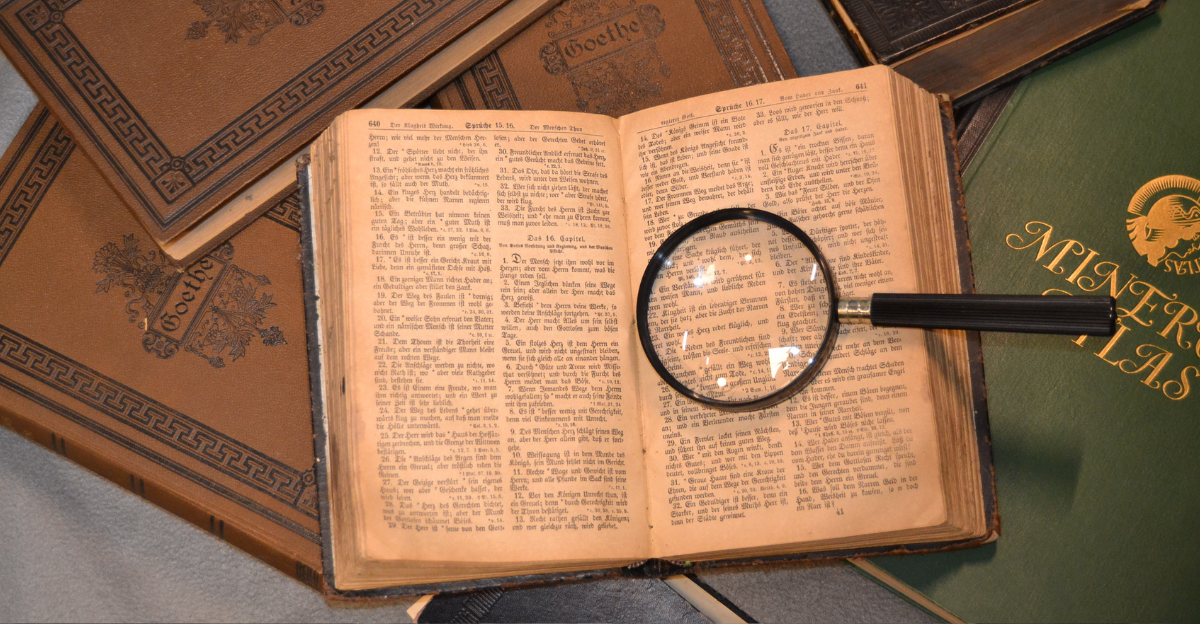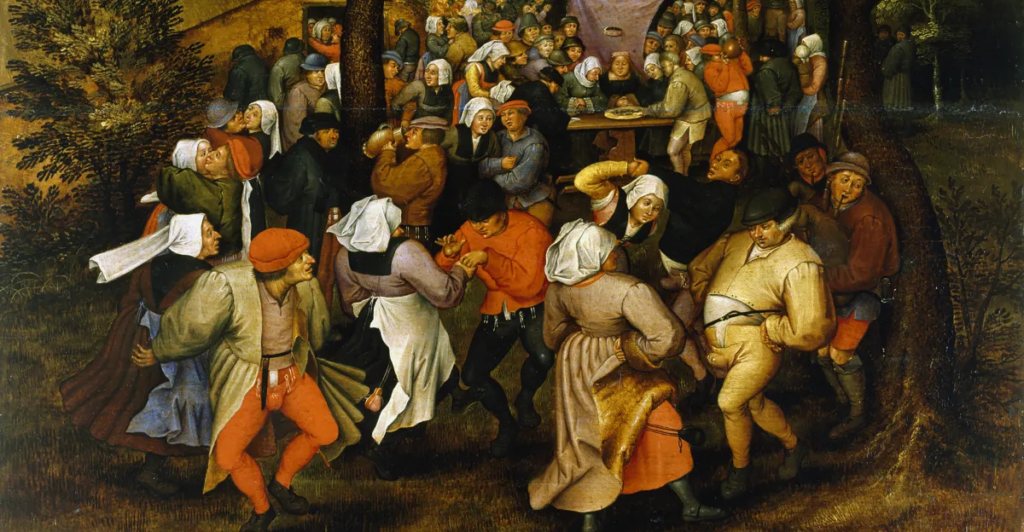
In July 1518, Strasbourg (then part of the Holy Roman Empire) witnessed one of history’s most bizarre epidemics: the Dancing Plague. For weeks, hundreds of people danced uncontrollably in the streets, ignoring exhaustion, injuries, and even death. This phenomenon, which claimed dozens of lives, remains a medical and sociological enigma. If this isn’t the strangest plague to ever hit humanity, I don’t know what is.
The Start of the Outbreak
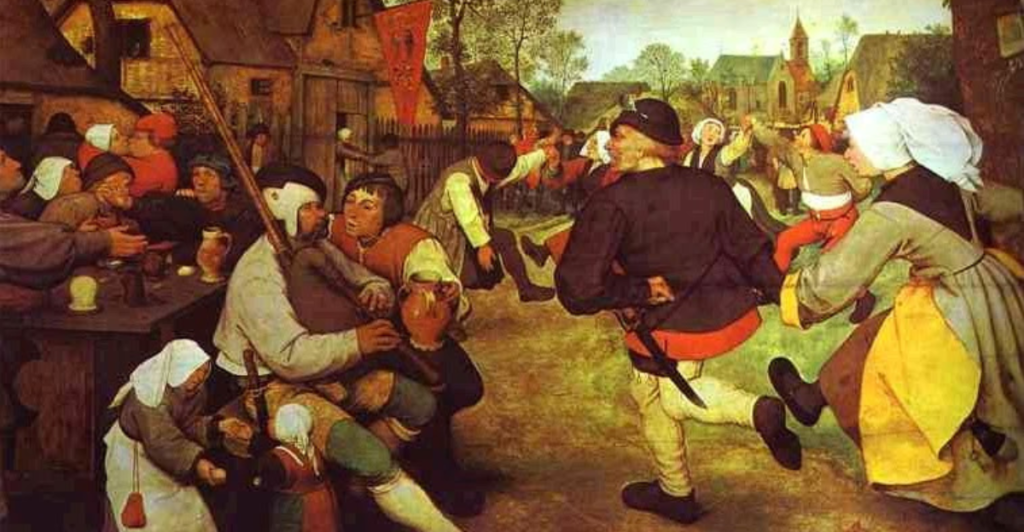
The plague started with Frau Troffea, a woman who began dancing uncontrollably in a Strasbourg street on July 14, 1518. Within days, dozens joined her, their movements described as spasmodic, with vacant eyes and bloodied feet. By August, over 400 people were dancing nonstop, collapsing from exhaustion, strokes, or heart attacks. Everyone was utterly baffled by the cause of this strange plague.
Authorities’ Bizarre Response
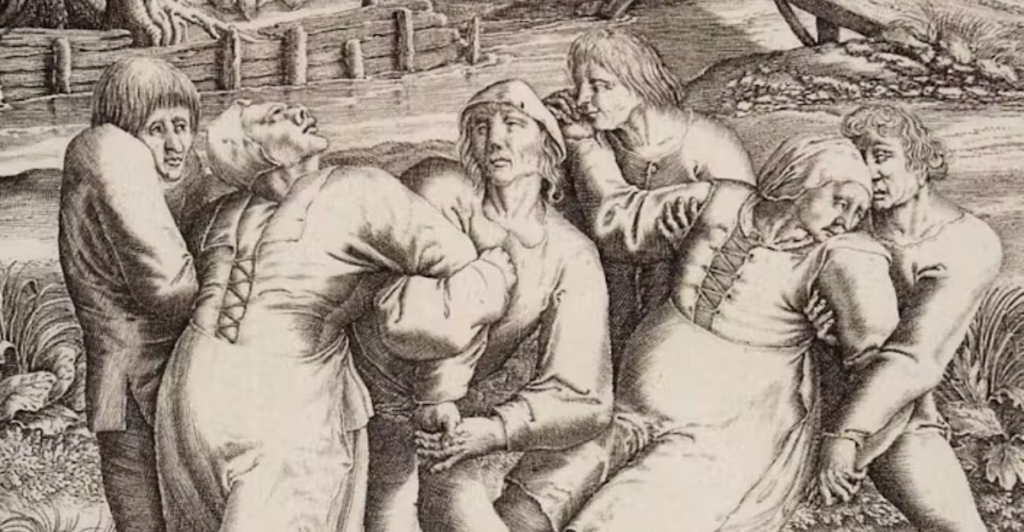
Strasbourg’s leaders believed the dancers needed to “dance it out.” They built stages, hired musicians, and encouraged healthy dancers to join, hoping to exhaust the afflicted. This naturally didn’t work and caused more chaos than anything else.
Mass Hysteria Theory

This theory was most believed to be the cause of the plague, especially by historian John Waller, who blamed the plague on a mass psychogenic illness triggered by extreme stress. In 1518, Strasbourg faced many difficulties like famine, disease outbreaks (e.g., smallpox, syphilis), and religious tensions, creating a volatile environment where collective anxiety could manifest as physical symptoms. Waller argues that the dancers’ trance-like state and vacant expressions reflect psychic contagion, where fear spreads rapidly in a tight-knit community.
Ergot Poisoning Theory

Another widely believed cause of this plague was due to contaminated rye bread. Ergot, a fungus that grows on damp rye, contains psychoactive compounds like ergotamine, which can induce hallucinations, convulsions, and spasms. One flaw in this theory was that Ergot poisoning typically causes gangrene, muscle pain, and restricted blood flow to extremities, symptoms that would physically prevent sustained dancing.
The Physical Toll the Plague Took

This might seem like a harmless plague to be faced with, but it was far from that. Dancers endured blistered feet, convulsions, and blood pooling in their shoes. Many people died from exhaustion, strokes, or heart attacks, with reports of 15 deaths per day at its peak. For a plague that caused dancing, the dancing had some serious consequences.
Why Did It Stop?
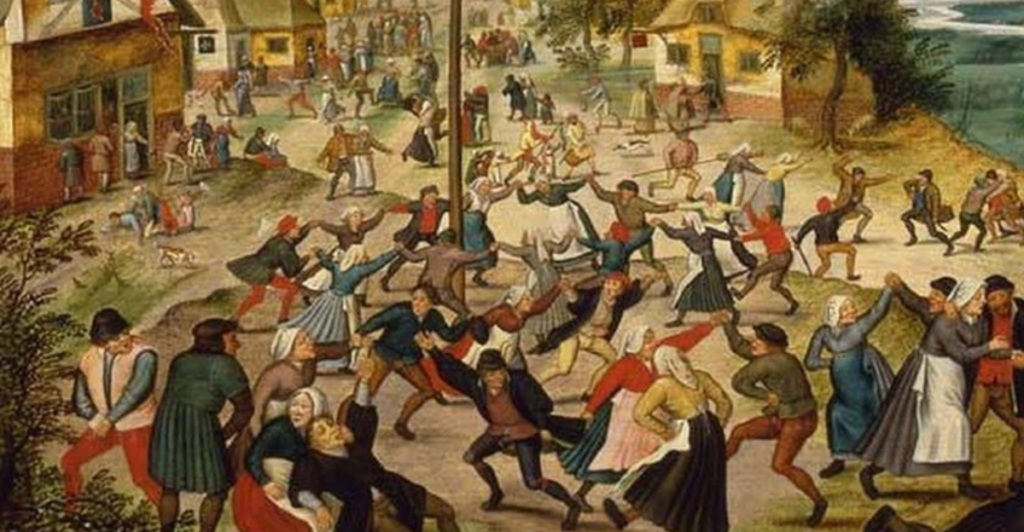
The dancing abruptly stopped in September 1518, which is shocking for no definite reason. A few things could have contributed to the end of the plague. The cycle of contagion was most likely broken due to physical exhaustion. Authorities also sent the worst-afflicted dancers to the shrine of Saint Vitus, a patron saint associated with movement disorders. Pilgrims underwent rituals involving holy water, crosses, and prayers, which may have restored calm through psychological relief. Public gatherings were also banned, which could have helped stop the spread of the plague.
Legacy and Cultural Impact
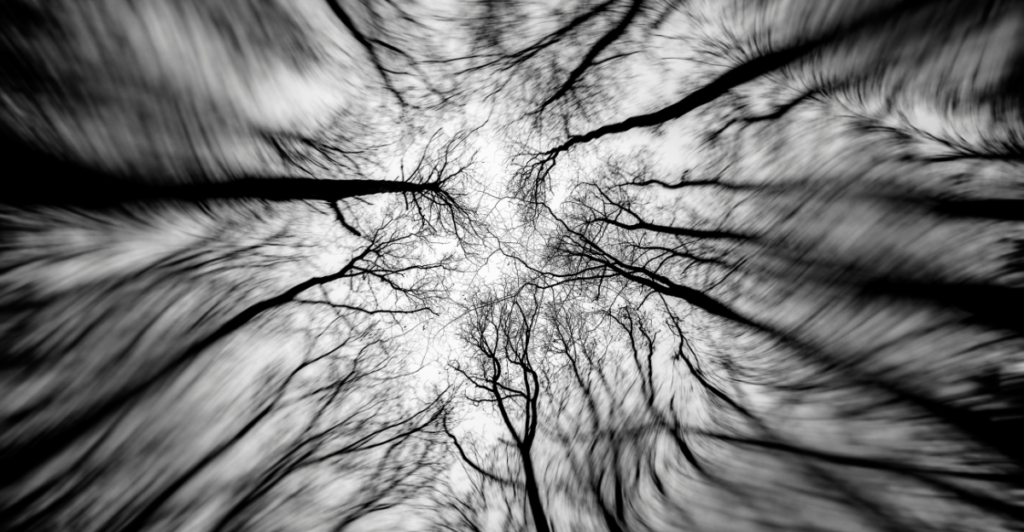
The Dancing Plague inspired horror stories, books, and even video games. It is still a cautionary tale about mass hysteria and the power of collective behavior. Similar outbreaks occurred in medieval Europe, but none were as significant as the dancing plague in Strasbourg.
Lessons for Modern Times
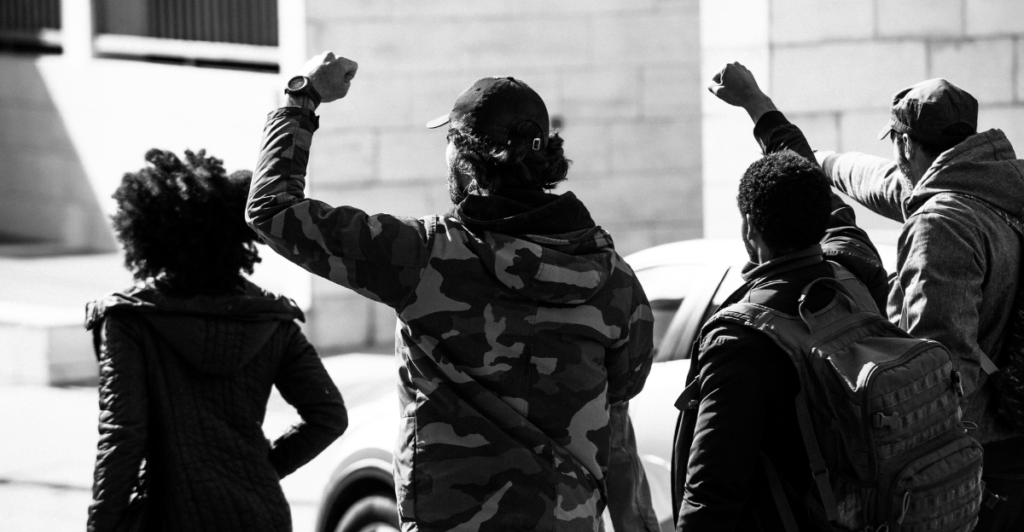
While it’s not likely to see the outbreak of a modern dancing plague, there are still a few cases in the modern world of mass psychogenic illness. There have been examples like fainting outbreaks in schools or unexplained diseases linked to stress. This perfectly shows how psychological and environmental factors can trigger irrational behavior in people without a definite answer as to what caused it.
Still a Mystery
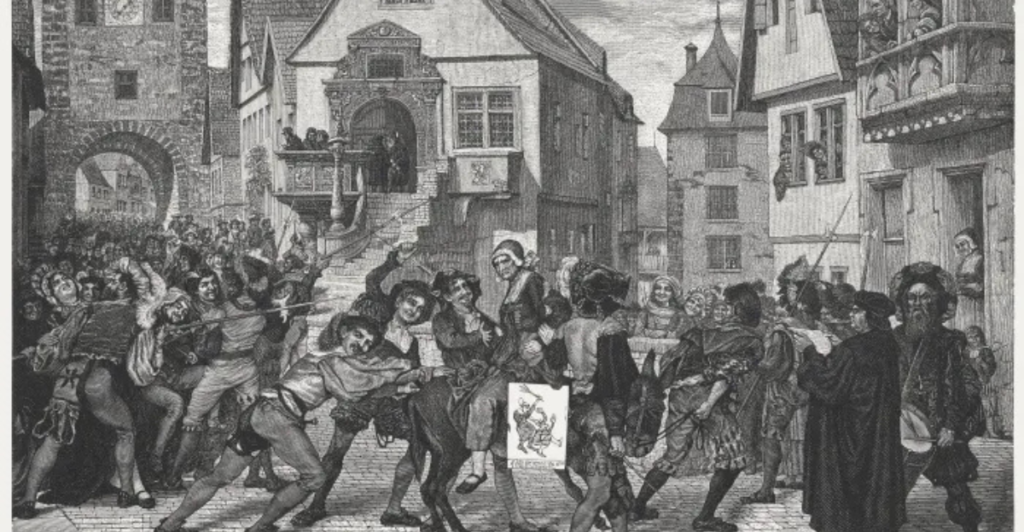
While we might never know the exact cause of this plague, the Dancing Plague of 1518 remains a haunting reminder of humanity’s vulnerability to collective madness. No matter what the cause may be, one thing is pretty clear: Fear and belief can make people do strange things.
References:
What the Heck Caused the Dancing Plague of 1518?
The Dancing Plague of 1518
Dancing Plague of 1518






